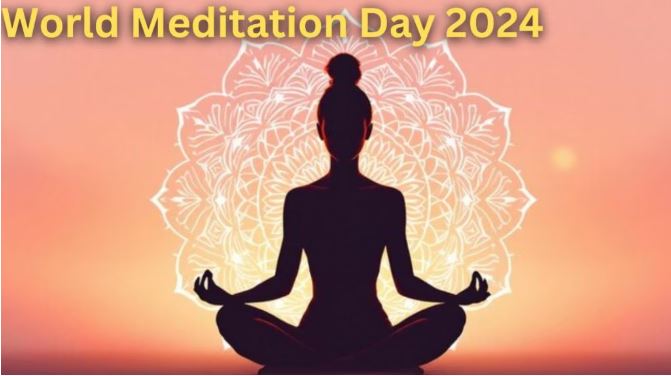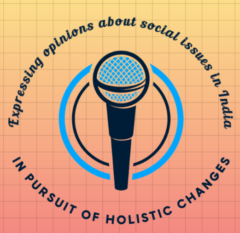
As we celebrate World Meditation Day on December 21, 2024, the theme this year is “Meditation for Global Peace and Harmony.” This theme resonates deeply in India, where meditation has been a part of cultural heritage for centuries. In a fast-paced world filled with stress and anxiety, meditation in India serves as a beacon of hope, offering pathways to mental clarity and emotional resilience. This blog will explore the profound impact of meditation, common techniques for health benefits, and how it can transform lives across the nation.
The Importance of Meditation in India
Meditation in India has roots that trace back thousands of years. It is not just a practice but a way of life for many. The ancient sages and yogis recognized the power of meditation to connect with the inner self and the universe. Today, meditation continues to play a crucial role in promoting mental health and well-being.
- Cultural Significance: Meditation is woven into the fabric of Indian spirituality. It is integral to various religious practices, including Hinduism, Buddhism, and Jainism. Each tradition offers unique techniques that promote peace and harmony.
- Health Benefits: Recent studies highlight that meditation can reduce stress levels significantly. According to research, individuals practicing meditation regularly report lower anxiety and improved emotional stability. This is particularly important in a country where mental health issues are on the rise.
- Modern Adaptations: As awareness grows, meditation in India has adapted to modern lifestyles. Many urban centers now offer workshops and online classes, making it more accessible to everyone. This evolution ensures that traditional practices remain relevant in today’s world.
Common Meditation Techniques for Health Benefits
When discussing meditation in India, it’s essential to highlight various techniques that can be practiced for health benefits. Here are some common methods:
- Mindfulness Meditation: This technique focuses on being present in the moment. Practitioners observe their thoughts without judgment, fostering a sense of calmness and clarity.
- Vipassana Meditation: Known as insight meditation, Vipassana encourages practitioners to observe their thoughts and sensations without attachment. This technique promotes deep self-awareness and emotional regulation.
- Transcendental Meditation (TM): TM involves silently repeating a mantra for 15-20 minutes twice daily. It helps reduce stress and promotes relaxation by allowing the mind to settle into a state of profound rest.
- Sahaj Samadhi Meditation: This technique emphasizes effortless awareness through mantra repetition. It promotes deep relaxation and connects practitioners with their true selves.
- Yoga Nidra: Often referred to as “yogic sleep,” Yoga Nidra guides practitioners into a state between wakefulness and sleep. It is highly restorative and helps reduce anxiety while enhancing creativity.
These techniques illustrate how meditation in India can be tailored to individual needs, providing numerous health benefits.
Promoting Meditation in India
To unlock the full potential of meditation in India, it’s crucial to promote these practices across various age groups.
- Engaging Youth: Schools can incorporate mindfulness programs into their curricula. Teaching children simple breathing exercises can help them manage stress effectively from an early age. It also helps take care of exam stress effectively.
- Community Workshops: Local community centers can host workshops aimed at adults and seniors. These sessions can introduce different meditation techniques while fostering social connections among participants.
- Online Resources: The digital age offers opportunities to reach wider audiences through online classes and apps focused on meditation in India. These resources make it easier for people to practice at their convenience.
By promoting meditation across age groups, we can cultivate a culture of mindfulness that benefits society as a whole.
The Role of Technology in Spreading Meditation Practices
Technology plays a significant role in making meditation more accessible than ever before.
- Mobile Applications: Apps like Headspace and Calm provide guided meditations tailored for various needs—be it stress relief or improving sleep quality. These tools are especially popular among younger generations seeking quick solutions for mental well-being.
- Online Courses: Many platforms now offer comprehensive courses on different types of meditation techniques. These courses allow individuals to learn at their own pace while receiving guidance from experienced instructors.
- Social Media Influence: Influencers on platforms like Instagram and YouTube often share their meditation journeys, encouraging followers to adopt similar practices. This trend helps normalize meditation as a part of daily life.
Through these technological advancements, meditation in India can reach diverse populations, fostering greater awareness about its benefits.
Conclusion: Embracing Meditation for Transformation
In conclusion, meditation in India serves as a powerful tool for unlocking peace and transforming lives. By integrating various techniques into daily routines, individuals can experience profound health benefits while contributing to societal harmony.
As we reflect on this year’s theme—”Meditation for Global Peace and Harmony”—let’s ask ourselves how we can incorporate these practices into our lives and inspire others to do the same.
Call to Action
Start your journey today! Dedicate just five minutes each day to practice one of the discussed techniques. Share your experiences with friends and family; together, let’s cultivate a culture of peace through mindfulness!

Nice
Thank you, Gaurav!
Good!
Yoga is Good as long as there are no religious connotations attached to it.
A simple form of Yoga is the ‘whole body relaxation’.
Assume the shavasana posture on a cot in a distraction free room.
Callout each part of your body starting from the toes to head and brain and say in your mind ‘RELAX’.
Toes – foot- shin -knees-thighs- waist-genitals-urinary bladder- ureters and kidneys- adrenals- small and large intestine-pancreas- liver and gall bladder- diaphragm- stomach- spleen- esophagus and gullet- lungs, trachea and larynx- heart- thymus gland- thyroids-shoulders- two arms- neck- vertebral column- jaws-salivary glands-tongue-nose-ear-eyes-skull-brain (prefrontal lobe, frontal lobe- parietal lobe- occipital lobe- pineal body-thalamus, hypothalamus- pituitary- cerebellum- medulla oblongata- spinal cord- autonomous nervous system) and so on.
You will feel extremely relaxed.
Thank you, sir! Excellent inputs again with regards to calming each part of the human body. I’m of the view that there should not be any religious connotations attached to healthy practices like yoga and meditation. It is a way of life to keep our body and mind healthy, and it is also an integral part of our culture. I strongly feel that as part of value-based education in schools, these practices should be imparted to children at a very young age so that they can reap the benefits of it in their studies and in other ways.